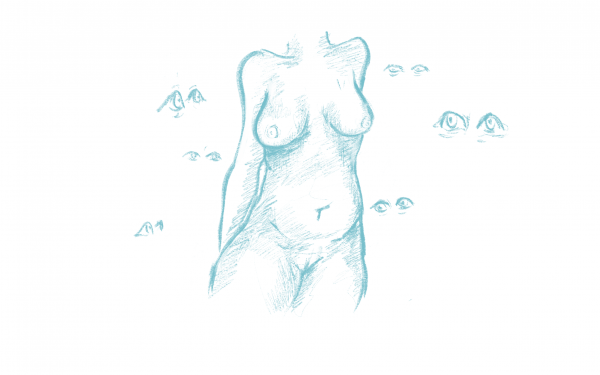Skinny at all costs
Beauty isn’t found in a syringe or under a knife.
Are we willing to do anything to be skinny?
The supermodel physique dominated the ‘90s and early 2000s. Supermodels such as Kate Moss were revered and positively nicknamed “the waif,” a term used to describe being so thin that one appears homeless.
A Common Sense Media study conducted on body image and the media found that, between 1999 and 2006, hospitalization for eating disorders in the U.S. went up 119 per cent in children under 12. Kids under the age of 12 were making themselves violently ill because they felt they could not reach the ideal Western standard of beauty.
The media creates and popularizes beauty standards. In the 2010s, the Kardashians put curvaceous bodies at the forefront, claiming ownership of an aesthetic portrayed by women of colour for decades prior. Various women from around the world travel to countries like Turkey and Brazil to get cosmetic surgeries. For example, the American Society for Aesthetic Plastic Surgery found that, between 2015 and 2019, the number of butt augmentation surgeries rose by 90.3 per cent.
Despite the emergence of the body positivity movement, the obsession with being skinny often overpowers self love.
From Ozempic to Wegovy to Mounjaro, weightloss drugs are appearing everywhere, promising a skinnier frame and “better health.” Kelly Clarkson, Rebel Wilson and Tori Spelling have all admitted to using one of these drugs, which just a few years ago would have been taboo to use.
In 2024, why has this rush to be skinny become so fervent?
Following the pandemic, there was a shift in the way we perceived bodies. Fitness challenges on TikTok made the rounds and people were looking towards a thinner, fitter ideal. Post-pandemic, the Kardashians's bums seemed to slowly disappear, and other celebrities were coming back thinner than ever before. Celebrities started raving about Ozempic as a tool for weight loss. Most “regular” people look towards Hollywood as a template for beauty, which has increased the public’s interest in these tools.
Ozempic is a semaglutide injection that is used to treat diabetes. Semaglutide assists the pancreas in releasing insulin that is needed when blood sugar levels are too high. A side effect of this type of medication is weight loss. However, there can be risks involved when using Ozempic, with gastrointestinal issues, fatigue and thyroid tumours being among them.
Despite the risks associated with such drugs, the demand for them created a shortage at one point. This presented a challenge for individuals who needed Ozempic for medical reasons, raising ethical questions about its use for weight loss.
These drastic measures taken to achieve thinness stem not only from intense beauty standards but also from systemic fatphobia and pervasive body shaming. From the moment we are able to consume media, the thin body type is pushed onto the masses. In turn, this tells us that bigger bodies are not as desirable, leading many to strive for an ideal that may not be healthy or achievable for them.
The rise of such weight loss drugs is a reminder that the skinny ideal is back.
And as the tiny ideal continues to dominate, it's crucial to remember that true beauty isn’t found in a syringe.
This article originally appeared in Volume 45, Issue 5, published November 5, 2024.


_600_832_s.png)




